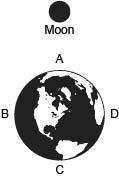
Chemistry, 24.04.2021 23:40 gilcarrillo146
Two substances, A and B, initially at different temperatures, come into contact and reach thermal equilibrium. The mass of substance A is 6.27 g and its initial temperature is 20.9 ∘C . The mass of substance B is 26.1 g and its initial temperature is 52.7 ∘C. The final temperature of both substances at thermal equilibrium is 46.3 ∘C. If the specific heat capacity of substance B is 1.17 J/(g⋅∘C), what is the specific heat capacity of substance A?

Answers: 3


Another question on Chemistry

Chemistry, 22.06.2019 11:50
If oil spills continue, all of the following should be expected except (2 points) death of aquatic life. polluted groundwater. decreased soil productivity. increased global temperatures.
Answers: 3

Chemistry, 22.06.2019 18:50
Asample of tin (ii) chloride has a mass of 0.49 g. after heating, it has a mass of 0.41 g. what is the percent by mass of water in the hydrate? %
Answers: 1

Chemistry, 22.06.2019 20:00
How are the terms group and period used on the periodic table
Answers: 1

Chemistry, 22.06.2019 22:30
Consider a culture medium on which only gram-positive organisms such as staphylococcus aureus colonies can grow due to an elevated nacl level. a yellow halo surrounds the growth, indicating the bacterium fermented a sugar in the medium, decreasing the ph as a result and changing the color of a ph indicator chemical. this type of medium would be referred to as a differential and enrichment culture.
Answers: 2
You know the right answer?
Two substances, A and B, initially at different temperatures, come into contact and reach thermal eq...
Questions

English, 31.08.2019 20:50


Biology, 31.08.2019 20:50


Mathematics, 31.08.2019 20:50

Mathematics, 31.08.2019 20:50


Social Studies, 31.08.2019 20:50


Mathematics, 31.08.2019 20:50



Computers and Technology, 31.08.2019 20:50




Mathematics, 31.08.2019 21:00

Mathematics, 31.08.2019 21:00

Mathematics, 31.08.2019 21:00

History, 31.08.2019 21:00




